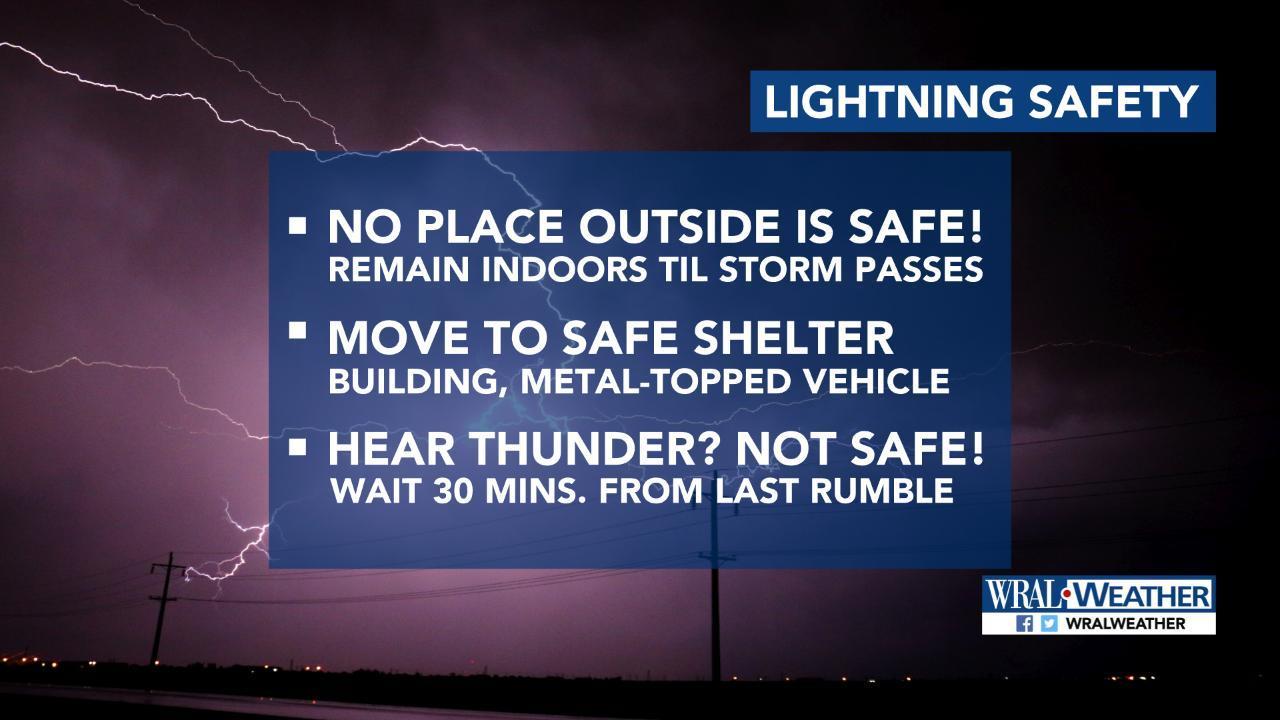NC high school sports lightning, storms policies and rules
North Carolina is no stranger to thunderstorms, in fact, the state has one of the highest number of lightning strike deaths in the country.
According to the National Weather Service, North Carolina ranks third in the United States for most lightning deaths between 1959 and 2017. Participating in high school sports could put people at a higher risk too.
The Centers for Disease Control and Prevention says 59% of lightning strike victims were participating in outdoor leisure activities when the strike happened. And nearly 1-in-4 lightning strike victims are between the ages of 15-24.
Each year, about 20 people are killed by lightning strikes in the United States. Lightning is hotter than the surface of the sun, so it’s not something to take lightly.
In North Carolina, thunderstorms can happen any month during the year, but 73% of U.S. lightning strike deaths occur in June, July, and August, according to data from 2006-2021.
It’s important to know that lightning can strike several miles away from the actual thunderstorm itself. It does not have to be raining or storming where you are for lightning to strike. That is why when you hear thunder or see lightning you should act.
NC lightning policies for high school sports
The N.C. High School Athletic Association has minimum policies in place for handing sports practices and contests when lightning or thunder is nearby.
Before sporting events begin, schools are required to have an evacuation plan for each facility it uses for practices and games. This plan includes identifying safe places for people to shelter during storms, which often times includes gymnasiums, cafeterias, locker rooms, or even vehicles or buses.
Each school designates staff members, often the athletic trainer or athletic director, who are assigned to monitor weather conditions for practices and games.
Minimum criteria for suspending & resuming activities:
- When thunder is heard or lightning is seen, play is suspended for at least 30 minutes. The evacuation plan for the outdoor facility is put into action.
- Once the activity has been suspended, the 30-minute clock resets every time thunder is heard or lightning is seen.
Schools can use lightning detectors or mobile apps to assist in making decisions about suspending activities or returning to play. However, hearing thunder or seeing lightning takes precedence over these tools.
There is an exception to visible lightning though. At night, sometimes lightning can be seen from storms that are far away. If no thunder can be heard and the flashes are low on the horizon, it is possible that outdoor activities can continue.
Lightning safety tips for high school sports
Knowing best practices for thunderstorms will help you make good decisions when you see lightning or hear thunder. Here are some lightning safety tips for high school sports:
- Know the emergency action plan and evacuation plan for the venue you are in.
- Do not use areas like dugouts as shelter during thunderstorms, they are not safe from lightning strikes.
- Avoid open fields, tops of hills, metal light poles, and tall trees.
- Stay away from water and wet items, as well as objects made of metal.
- Don’t use plumbing to do things like wash your hands or take a shower.
- Do not lie on concrete floors or lean against concrete walls.
If someone is struck by lightning, call 9-1-1 immediately. People should check for breathing and begin mouth-to-mouth resuscitation if breathing has stopped. If the person does not have a heartbeat, CPR should begin. However, if the person is breathing and has a pulse, check for burns, nervous system damage, loss of hearing or eyesight, and possible broken bones.
Source: highschoolot.com
